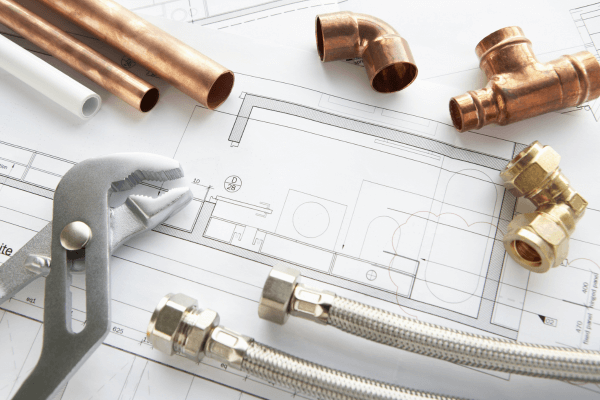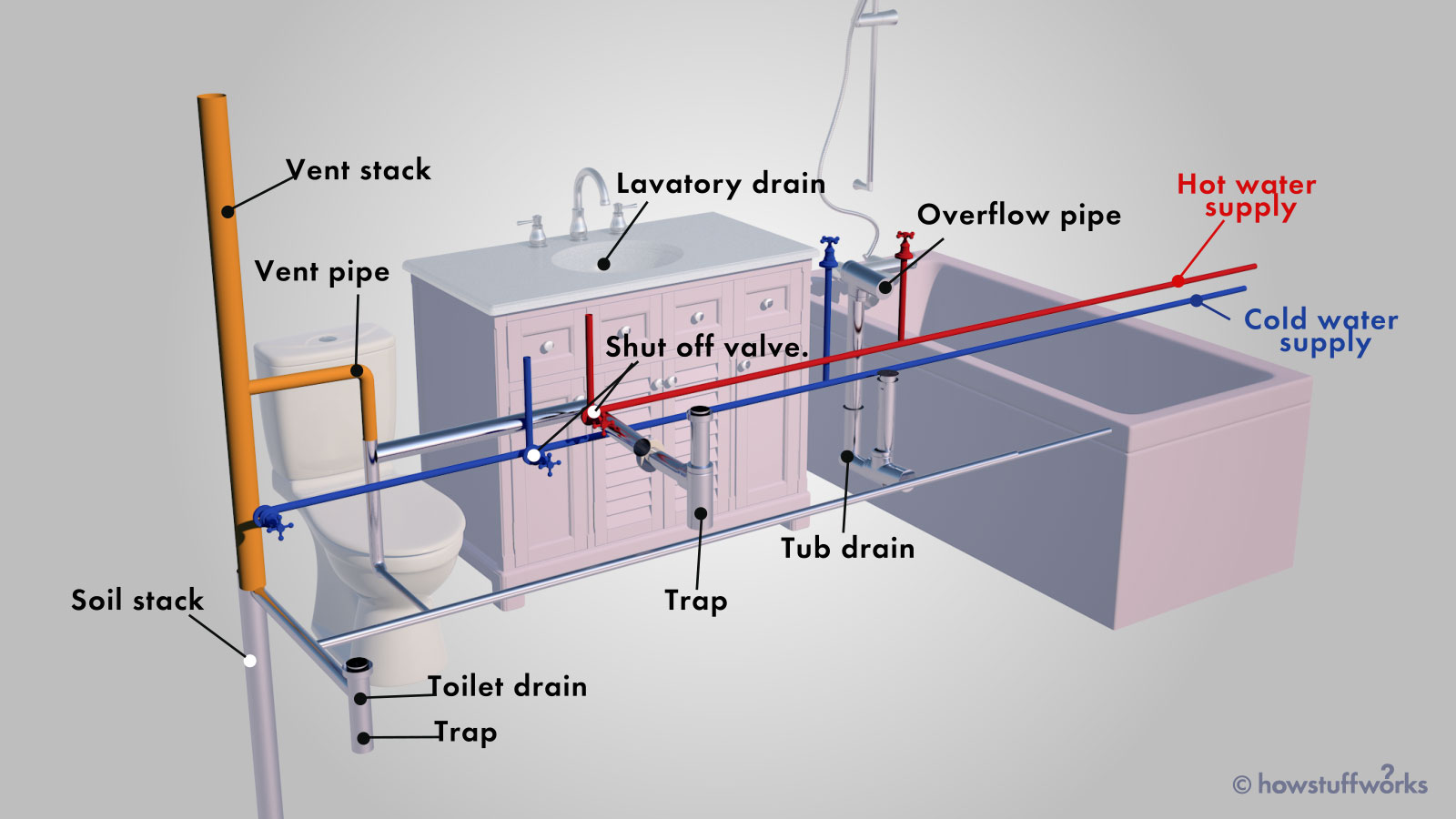The Core Elements of Your Property's Plumbing System
The Core Elements of Your Property's Plumbing System
Blog Article
Have you been on the lookout for advice around The Inner Workings of Your Home's Plumbing?

Recognizing how your home's plumbing system functions is essential for each house owner. From delivering clean water for alcohol consumption, food preparation, and bathing to safely eliminating wastewater, a well-maintained pipes system is critical for your family's health and wellness and convenience. In this comprehensive guide, we'll check out the intricate network that comprises your home's plumbing and deal pointers on upkeep, upgrades, and handling typical problems.
Introduction
Your home's plumbing system is more than just a network of pipes; it's a complicated system that guarantees you have accessibility to clean water and effective wastewater elimination. Recognizing its parts and just how they work together can help you stop pricey repairs and ensure everything runs smoothly.
Basic Parts of a Plumbing System
Pipes and Tubing
At the heart of your pipes system are the pipes and tubes that lug water throughout your home. These can be made from different materials such as copper, PVC, or PEX, each with its advantages in regards to longevity and cost-effectiveness.
Fixtures: Sinks, Toilets, Showers, etc.
Fixtures like sinks, toilets, showers, and bathtubs are where water is used in your house. Understanding how these components attach to the pipes system assists in identifying issues and intending upgrades.
Shutoffs and Shut-off Points
Shutoffs control the flow of water in your pipes system. Shut-off shutoffs are critical throughout emergency situations or when you need to make repairs, enabling you to separate parts of the system without interrupting water circulation to the entire house.
Water System
Key Water Line
The major water line connects your home to the community water system or a personal well. It's where water enters your home and is dispersed to numerous fixtures.
Water Meter and Pressure Regulator
The water meter procedures your water usage, while a pressure regulatory authority makes certain that water streams at a safe stress throughout your home's pipes system, avoiding damage to pipelines and fixtures.
Cold Water vs. Hot Water Lines
Recognizing the difference between cold water lines, which provide water directly from the main, and warm water lines, which carry warmed water from the water heater, assists in repairing and preparing for upgrades.
Drain System
Drain Piping and Traps
Drain pipelines lug wastewater far from sinks, showers, and bathrooms to the sewer or sewage-disposal tank. Traps avoid drain gases from entering your home and likewise trap debris that might cause clogs.
Air flow Pipes
Air flow pipelines permit air right into the water drainage system, preventing suction that could reduce drain and trigger catches to vacant. Appropriate ventilation is crucial for keeping the honesty of your plumbing system.
Relevance of Appropriate Water Drainage
Guaranteeing correct drainage protects against backups and water damages. Frequently cleansing drains and maintaining traps can protect against expensive fixings and extend the life of your pipes system.
Water Heating System
Types of Water Heaters
Hot water heater can be tankless or traditional tank-style. Tankless heating units warmth water on demand, while storage tanks keep heated water for instant usage.
Upgrading Your Plumbing System
Factors for Updating
Updating to water-efficient components or changing old pipes can improve water high quality, lower water costs, and increase the value of your home.
Modern Pipes Technologies and Their Benefits
Explore innovations like wise leakage detectors, water-saving commodes, and energy-efficient water heaters that can save cash and reduce environmental effect.
Expense Factors To Consider and ROI
Compute the upfront prices versus lasting financial savings when considering pipes upgrades. Several upgrades pay for themselves via reduced energy costs and fewer repair work.
Just How Water Heaters Connect to the Plumbing System
Comprehending just how hot water heater attach to both the cold water supply and warm water circulation lines aids in diagnosing issues like inadequate hot water or leakages.
Upkeep Tips for Water Heaters
Routinely flushing your water heater to remove sediment, inspecting the temperature level settings, and examining for leaks can expand its life-span and improve energy effectiveness.
Common Plumbing Problems
Leaks and Their Causes
Leakages can take place as a result of maturing pipelines, loose installations, or high water stress. Addressing leaks quickly avoids water damages and mold and mildew growth.
Clogs and Clogs
Clogs in drains and commodes are commonly triggered by flushing non-flushable things or an accumulation of oil and hair. Using drain displays and bearing in mind what goes down your drains can protect against obstructions.
Indicators of Plumbing Troubles to Watch For
Low tide pressure, slow-moving drains, foul odors, or abnormally high water expenses are indicators of possible plumbing troubles that should be dealt with immediately.
Plumbing Maintenance Tips
Regular Evaluations and Checks
Schedule annual pipes evaluations to catch concerns early. Look for indications of leaks, deterioration, or mineral build-up in taps and showerheads.
DIY Upkeep Tasks
Basic jobs like cleansing tap aerators, checking for toilet leaks utilizing color tablet computers, or insulating exposed pipelines in cool environments can avoid significant plumbing concerns.
When to Call a Professional Plumbing Technician
Know when a pipes problem requires professional experience. Attempting complex repair services without appropriate expertise can result in even more damage and greater repair work prices.
Tips for Reducing Water Use
Simple routines like fixing leaks without delay, taking shorter showers, and running full lots of laundry and meals can preserve water and lower your utility costs.
Eco-Friendly Pipes Options
Consider lasting plumbing materials like bamboo for floor covering, which is durable and green, or recycled glass for counter tops.
Emergency situation Preparedness
Steps to Take Throughout a Pipes Emergency
Know where your shut-off shutoffs lie and how to shut off the water supply in case of a burst pipeline or major leak.
Importance of Having Emergency Get In Touches With Useful
Maintain call details for local plumbings or emergency situation solutions conveniently offered for fast reaction during a plumbing dilemma.
Environmental Impact and Conservation
Water-Saving Fixtures and Appliances
Installing low-flow faucets, showerheads, and toilets can substantially minimize water use without compromising efficiency.
Do It Yourself Emergency Situation Fixes (When Relevant).
Temporary fixes like using duct tape to patch a dripping pipeline or positioning a pail under a trickling tap can decrease damages till a professional plumbing technician gets here.
Verdict.
Understanding the composition of your home's plumbing system encourages you to preserve it effectively, saving money and time on fixings. By adhering to normal maintenance routines and remaining educated concerning contemporary pipes modern technologies, you can ensure your pipes system operates effectively for many years to come.
Understanding Your Home Plumbing System: A Comprehensive Guide
Plumbing System: The Lifeline of Your Home
At its core, the plumbing system is designed to perform two primary functions: bring fresh water into your home and remove wastewater. The system is a network of pipes, fixtures, and other components that transport water and sewage. Residential plumbing systems include potable water supply lines, drain-waste-vent (DWV) systems, and various plumbing fixtures that make water use in daily tasks possible.
Key Components:
Water Supply: This part of your plumbing system brings municipal water into your home, passing through the main water supply line. It s responsible for supplying all water needs, from drinking to bathing.
Drainage System: It carries waste and water away from your home to the sewer or septic system. This system includes all the piping within your home that leads to external sewage or septic systems.
Vent System: An essential yet often overlooked component, the vent system allows sewer gases to escape and lets air into the drainpipes, ensuring water and waste move correctly through the system.
Fixture: More Than Just Taps and Toilets
Plumbing fixtures are the most interactive parts of the plumbing system, including faucets, showers, toilets, and sinks. Each fixture is connected to the plumbing system and plays a role in either the delivery of freshwater or the disposal of waste and wastewater.
Types of Fixtures:
Faucets and Sinks: Used for washing hands, dishes, and other daily water needs. Toilets: Dispose of human waste through the sewage system. Bathtubs and Showers: Provide bathing facilities, requiring both hot and cold water supply. Water Supply: The Source of Life
The water supply system is a critical component, ensuring that potable water is available throughout your home for various uses, including drinking, cooking, and cleaning. This system consists of pipes that distribute water to different parts of the house, controlled by valves to regulate the water flow.
Types of Plumbing: Materials and Methods
Various types of plumbing systems and materials are used in residential settings, each with its advantages and applications. From copper and PVC pipes for water supply to cast iron and ABS for drainage, the choice of materials can impact the longevity and efficiency of your plumbing system.
https://intownplumbingtx.com/articles/home-plumbing-system-guide/

Do you appreciate reading up on Understanding Your Home's Plumbing Anatomy? Leave a short review down below. We'd be delighted to know your insights about this blog posting. We are looking forward to see you back again soon. For those who liked our blog entry please remember to share it. Thank you so much for your time spent reading it.
Request Appointment Report this page